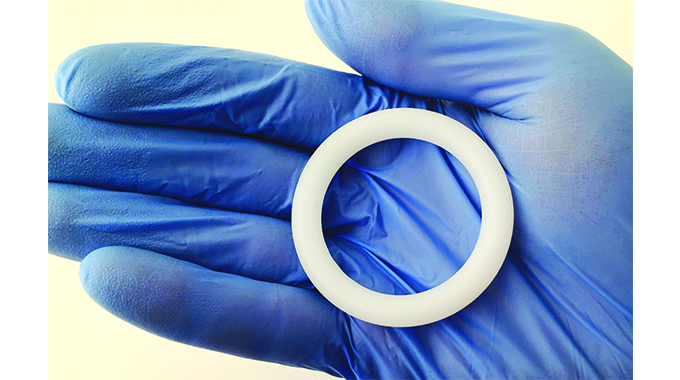Dapirivine ring: Giving Women Power over HIV/Aids

Roselyne Sachiti
IN January this year, the World Health Organisation (WHO) delivered news that brought hope for many women in Zimbabwe and in sub Saharan Africa, where the HIV epidemic has hit hardest.
In this part of the world, the sad reality is that young women aged 15-24 are more than twice as likely to acquire HIV compared to young men.
When the world health body recommended that the dapivirine vaginal ring (DPV-VR) may be offered as an additional prevention choice for women at substantial risk of HIV infection as part of combination prevention approaches, there was hope and anxiety as women patiently waited for country approvals and licensing.
With HIV/Aids remaining the leading cause of death for women aged between 15 and 44 worldwide, the monthly vaginal ring raised hopes of putting the power of protection into women’s hands, especially at a time Covid-19 has sparked a wave of sexual gender based violence (SGBV).
Women experiencing SGBV during Covid-19-induced lockdowns usually cannot negotiate condom use and safe sex.
In some instances where they ask their partners to use condoms for prevention of HIV and sexually transmitted infections (STIs), the women also face physical and emotional violence.
Since the January announcement, Zimbabwean women have been following the science and anxiously wanted to hear when they would finally access the life changing intervention.
The wait is finally over, Zimbabwe becomes the first country in the world to okay use of the ring.
The Medicines Control Authority of Zimbabwe (MCAZ) yesterday told online publication HealthTimes that they had approved the ring and would continue monitoring it for safety purposes.
“The authority will continue to monitor the product as it is being used in Zimbabwe and relies on the public to report to their healthcare providers if they have any issues with the ring,” MCAZ projects and public relations officer, Mr Shingai Gwatidzo told the online publication.
“This would help the authority to continually ensure the public are protected and have access to safe effective and good quality products.”
The DPV-VR, a female-initiated option to reduce the risk of HIV infection must be worn inside the vagina for a period of 28 days, after which it should be replaced by a new ring.
The ring is made of silicone and is easy to bend and insert. It works by releasing the antiretroviral drug dapivirine from the ring into the vagina slowly over 28 days.
Welcoming the news which brings more hope, Anna Sango, an HIV advocate, who has been following the advocacy and developments on the ring is excited.
She says the ring is a game changer in prevention of HIV among women and girls.
“We welcome the approval for use of the Dapivirine ring,” she says. “Zimbabwe has been exemplary in ushering in new and innovative tools for HIV prevention.
“We hope the responsible authorities ensure equitable access for all, including marginalised women and girls.”
Sango adds: “There is also much need for sensitisation of communities on this amazing prevention tool for girls and women engaging in sexual activity.”
She explains that the ring is a discreet tool that empowers women and girls, adding it will contribute to lowering HIV infections among young women and girls.
“We value that there will be continued monitoring of this tool and use to keep track of its efficacy,” she says. “Once again we applaud Zimbabwe for this approval and that there will be careful monitoring of use.”
Zimbabwean women and other African women were among those who participated in the trials.
One of the randomised trial participants Tariro Kutadza, a TB Champion for StopTB Partnership Zimbabwe, points out the ring is an empowering gadget that puts an upper hand for and used by only a woman.
“It also reduces stigma a lot after insertion, no one knows about it,” she explains. “Finally, HIV cannot pass to my body because of the prevention initiative of the 21st century.”
Chairperson of the Zimbabwe Women Living with HIV National Forum, Catherine Murombedzi, says the power to protect lies in the woman now.
“This is a great HIV prevention tool kit, we must now demand the Ministry of Health and Child Care (MoHCC) to bring the prevention kit home, and ask parent ministry cost, it has to be affordable,” she notes. “It in fact must be subsidised.”
She says the ring has several advantages that benefit women.
“It is light and needs no refrigeration so rural centres can have it. No one knows, only the user does. It is intact for 28 days so no need to wash even when having a menstrual cycle. It’s the key to prevention safely paddocks virus on entry point,’’ she emphasises.
Indeed, the vaginal ring will give women power and protection .
All the heroines who played a part in the trials should be applauded as their efforts will save many women around the world from HIV infection and reduce the burden of HIV and Aids at country level.











Comments